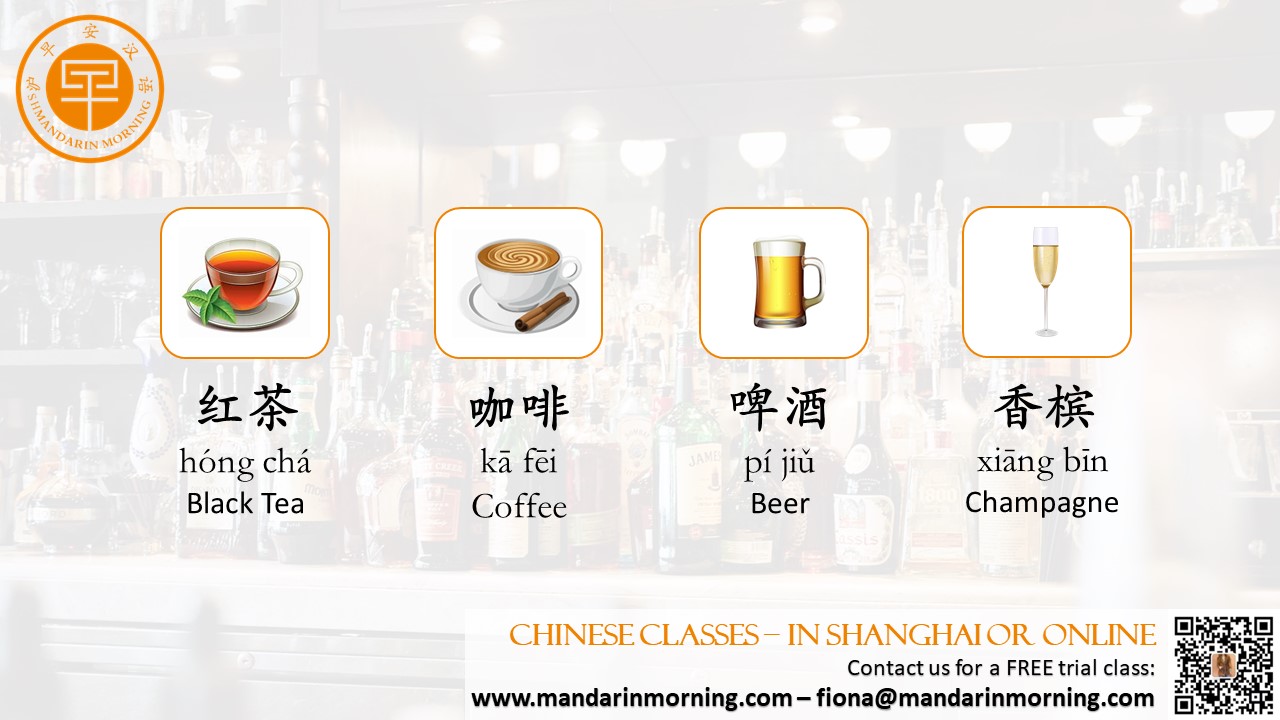In this beginner’s guide, we will explore 10 essential Chinese beverage words, covering everything from classic teas to popular alcoholic drinks. Black tea 红茶 Black tea in Chinese is 红茶 (hóng chá), literally, RED tea. The color 红 (red) is derived from the reddish color of the brewed tea, which appears more red than black. However, the English term “black tea” refers to the color of the tea leaves themselves. Green tea 绿茶 绿茶 (lǜ chá; green + tea) is one of the oldest and most popular types of tea in China. Drinking green tea has many health benefits, such as improving brain function, protecting against cancer, lowering the risk of heart disease, etc. Milk tea 奶茶 Do you usually enjoy your cup of tea with or without milk? When adding milk to your tea, you can use the term 奶茶 (nǎi chá; milk tea) to refer to your beverage. 奶 (nǎi) is short for 牛奶 (niú nǎi), meaning cow’s milk. Matcha 抹茶 Distinct from other teas, 抹茶 (mǒ chá) comes in powdered form rather than as leaves. Its Chinese term closely resembles its English counterpart, “Matcha.” In addition to being used for tea, 抹茶 is a popular ingredient in desserts, such as 抹茶蛋糕 (matcha cake; mǒchá dàngāo) and 抹茶冰淇淋 (matcha ice cream; mǒchá bīngqílín). Coffee 咖啡 咖啡 (kāfēi) is a loanword derived from the English term “coffee.” Here are some bonus words to specify the type of coffee you prefer: 黑咖啡 (hēi kāfēi; black + coffee), 白咖啡 (bái kāfēi; white + coffee), 冰咖啡 (bīng kāfēi; ice + coffee) Red wine 红酒 Imported wines, particularly 红酒 (hóng jiǔ; red + wine), have gained popularity in China due to the color red traditionally symbolizing luck, joy, and happiness. It’s important to note that 白酒 (bái jiǔ; white + wine) does not translate to “white wine.” Instead, 白酒, also known as baijiu, refers toa distilled alcoholic drink made from fermented sorghum. To specify “white wine” in Chinese, you should use the term 白葡萄酒 (bái pútao jiǔ; white + grape + wine). Beer 啤酒 Beer, bière, birra, bier – notice a pattern among these words? They all start with the letter “b” and share a similar sound for their first syllable, “bi.” In Chinese, this sound was borrowed and the character 啤 (pí) was created to match it. Combining 啤 (pí) with 酒 (jiǔ), which means “alcohol” or “wine,” we get 啤酒 (píjiǔ), the Chinese word for “beer.” This linguistic adaptation illustrates the universal appeal of this popular beverage. Sake 清酒 清酒 (qīng jiǔ) is a naturally fermented alcoholic drink made from rice. Unlike the previously mentioned alcoholic beverages, sake is created using a combination of rice, water, yeast, and koji-kin during the brewing process. Koji-kin, a special type of mold with the scientific name Aspergillus oryzae, is also used in soy sauce production. Whiskey 威士忌 威士忌 (wēi shì jì) is a loanword derived from the English term “whiskey.” This distilled alcoholic beverage has a growing market in China. As the Chinese market for whiskey continues to expand, more varieties and brands are being introduced to cater to the evolving tastes of consumers. Champagne 香槟 The origin of 香槟 (xiāng bīn) is a phonetic transliteration from its English counterpart, “champagne.” Although not as popular as 红酒 (red wine) and 白葡萄酒 (white wine) in the past, 香槟 has been steadily gaining popularity in recent years in the Chinese market. Champagne is often associated with celebrations and special occasions, making it an appealing choice for an increasingly affluent and globally connected younger generation in China. |